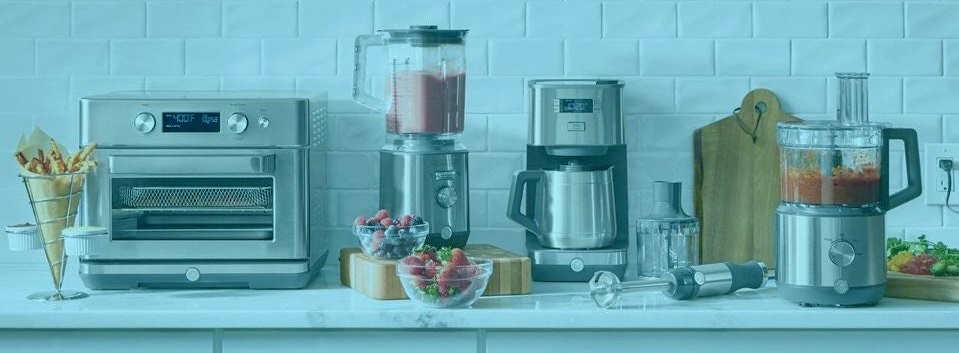The Indian Home Appliances market estimated at USD 5.4 bn in 2022, is expected to touch ~ USD 7.5 bn by 2027, growing at a healthy clip of 6.4% p.a. over the period. The growth drivers is the high consumption based demand, which ranges from first time, entry level users of basic appliances, to established users upgrading to technologically superior products as well as adopting new products i.e. dishwashers, clothes dryers, remote sensing appliances etc.
Historically, the small appliances, with low technology, basic products had limited entry barriers resulting in a significant unorganised (non-branded) segment as well as a large number of small / regional and niche branded players. However, over the years, the share of the unorganized segment has reduced with consumers increasingly preferring branded, trusted products.
While the share of the organized sector has increased, so have competitive pressures, driven by large number of existing players, regular entry of new players i.e. Dyson, iRobot, Beko, entry of large retailers through their own private labels and extension of strong players into new product categories (e.g. Crompton Greaves after Gandhimati acquisition has announced entry into the fast growing USD 300 mn built-in kitchen segment).
The key success factors in the small appliances sector is to have Scaled Operations wherein economies can be leveraged across the entire value chain, enabling the business to be:
Price Competitive : With rising inputs costs, as most products are fairly standard, the ability to pass a price rise is limited. As price is a key decision influencer, competitive operations are hence imperative.
Able to offer a Wide Product Portfolio ranging from basic utility appliances to higher end products, to comprehensively cater to the requirements of trade and consumers.
Regularly Introduce New Products, in order to keep pace with consumer requirements, aspirations and maintain high engagement levels.
Available Extensively through a widespread multi-channel distribution network (entailing Multi-Branded Stores, exclusive stores, online etc) providing consumers convenience and comfort to look, touch and feel the product
Able to offer Reliable After Sales Services at company, distributor and retail level.
Able to build a Strong Brand/ Multi-Brand Equity, conveying utility, aspiration, reliability and trust, through extensive marketing, celebrity endorsements, trade promotions, customer schemes etc.
Develop robust D2C capabilities to offer unique, direct engagement experiences to its consumers.

In pursuance of scale, entrenched international and domestic players have undertaken Acquisitions i.e. Groupe SEB acquired Maharaja Whiteline, Taurus Group of Spain acquired Inalsa, Whirlpool acquired Elica India and recently, Crompton Greaves acquiring Butterfly Gandhimati, and most recently the acquisition of strong legacy brand/ business, Sunflame by V Guard; Joint Ventures for manufacturing and/ or distribution i.e. Voltas and Beko, Stovekraft and Black&Decker (distribution), Bajaj Electricals and Morphy Richards (distribution), Panasonic (select range) and Amazon India(distribution). In addition to the traditional inorganic initiatives, we believe that companies will seek to acquire D2C Companies to expand their customer engagement and service platforms. Reflective of this strategic need is the acquisition of Lifelong Online by Thrasio, wherein Lifelong’s knowledge and expertise will be leveraged to acquire brands and build the businesses to scale.
The markets inclination towards scale is apparent in the high valuation premium (PE multiples range from 30-40X) commanded by the few large listed businesses. Similarly, Private Equity investments in select large players have yielded good returns through successful public listing exits (Stovekraft- Sequoia Crompton Greaves- Advent). Wonderchef, a fast growing small appliances and branded cookware Company has attracted private capital from marquee investors and family offices.
Hence we believe, that while on the one hand long term players would look to grow organically and inorganically, driven by the inability to rapidly scale, succession issues, select mid-sized established regional players are likely to consider monetizing their business. However, limited strategic and market appetite for sub-optimal businesses, is likely to create a valuation conundrum leading to an impasse in the exit plans.
While an outright sale would always be an option, an alternative structure entailing a “platform consolidation of two (or more) mid-sized synergistic businesses” to form a sizeable scaled business, which thereafter could be listed or sold to a strategic player, can be considered. Such a consolidation, would immediately catapult the combined entity into a stronger market position, allowing for synergies and thereby leading to a significant expansion of applicable multiples.
The small appliances industry is at an inflexion point and well primed for a cycle of strategic consolidation, we do believe an “Out of the Box” approach may need to unlock value for all stakeholders!










